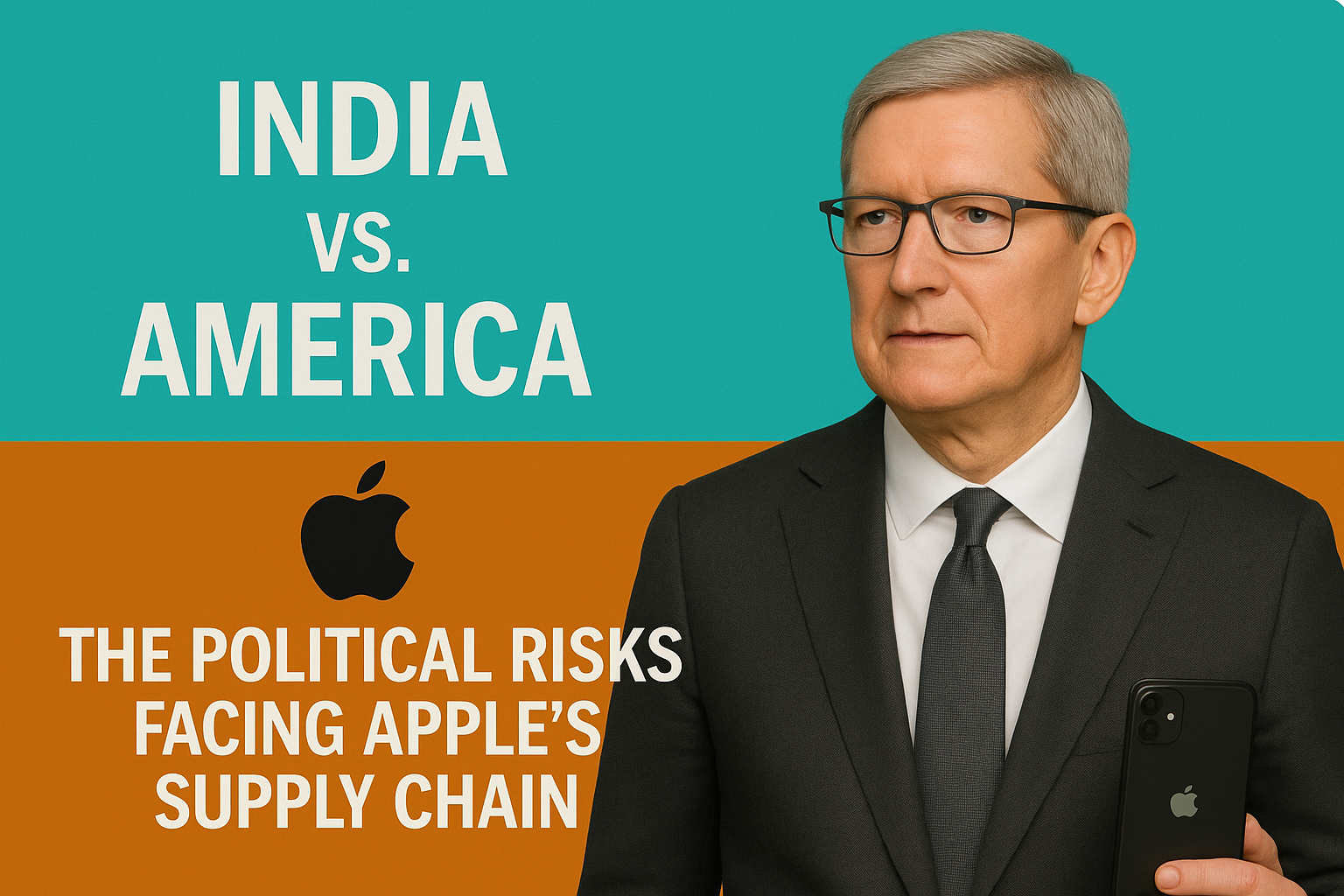India vs. America: The Political Risks Facing Apple’s Supply Chain
Introduction
On May 23, 2025, former U.S. President Donald Trump publicly stated that Apple Inc. should face a 25% tariff on iPhones sold in the U.S. if they are not manufactured domestically. The comment comes amid Apple’s ongoing efforts to shift iPhone production from China to India. From an economist’s standpoint, this development highlights the complex intersection of industrial policy, global supply chains, and multinational corporate strategy.
Source: Reuters
Apple’s Production Shift and Supply Chain Diversification
Apple has been diversifying its supply chain to mitigate geopolitical risk and rising labor costs in China. According to Bloomberg, Apple plans to manufacture the majority of iPhones destined for the U.S. market in India by the end of 2026. India now accounts for approximately 20% of global iPhone production, with FY2025 output rising to $22 billion—a 60% year-over-year increase.
This realignment reflects broader trends in global manufacturing, where firms are relocating operations in response to geopolitical tensions, COVID-era supply chain lessons, and incentive programs offered by emerging economies like India.
Implications of the Proposed Tariff
Trump’s proposed 25% tariff poses a direct challenge to Apple’s international manufacturing model. If enacted, such a tariff could significantly raise the retail price of iPhones—analysts estimate prices may soar to as much as $3,500 per unit for domestically manufactured models.
From a macroeconomic perspective, these tariffs function as a distortionary trade barrier. They may protect domestic manufacturing in the short term but at the cost of consumer welfare and potential retaliatory actions from trade partners.
Domestic Production: Unrealistic and Costly
Producing iPhones within the U.S. presents substantial barriers. Beyond labor cost differentials, the U.S. currently lacks the infrastructure, labor specialization, and ecosystem of suppliers that exist in Asia. Establishing a comparable network domestically would require 5–10 years and billions in capital expenditures.
Therefore, from a cost-benefit standpoint, domestic production for a complex, high-volume consumer electronics product like the iPhone is inefficient under current market conditions.
India’s Strategic Role
India has emerged as a key beneficiary of Apple’s relocation strategy. Supported by the Production-Linked Incentive (PLI) scheme, Apple’s key supplier Foxconn is investing $1.5 billion in a display module plant in Tamil Nadu, expected to create over 14,000 jobs. This aligns with India’s broader goal to become a global electronics manufacturing hub, reducing its reliance on imports and integrating more deeply into global value chains.
Market Reaction and Investor Sentiment
Apple’s stock dropped by 3.5% following Trump’s statement, reflecting market concerns over supply chain disruption, increased costs, and regulatory unpredictability. The incident also triggered sell-offs across other tech firms with globalized production networks.
For investors, this underscores the importance of factoring geopolitical risk into equity valuations—particularly for companies with significant foreign exposure or politically sensitive products.
Conclusion
From an economist’s viewpoint, the Trump tariff threat on Apple represents more than a bilateral trade issue—it is a symbol of the broader global transition away from open, multilateral trade toward increasingly politicized industrial policy. While Apple’s move to India is economically rational and strategically sound, the company—and others like it—must remain agile in navigating unpredictable policy environments.
Policy makers, meanwhile, should weigh the long-term costs of protectionist measures against their short-term political gains. Constructive engagement and strategic industrial support—rather than punitive tariffs—offer a more sustainable path to economic resilience.


